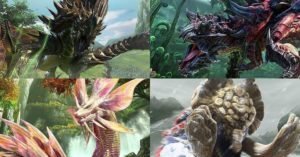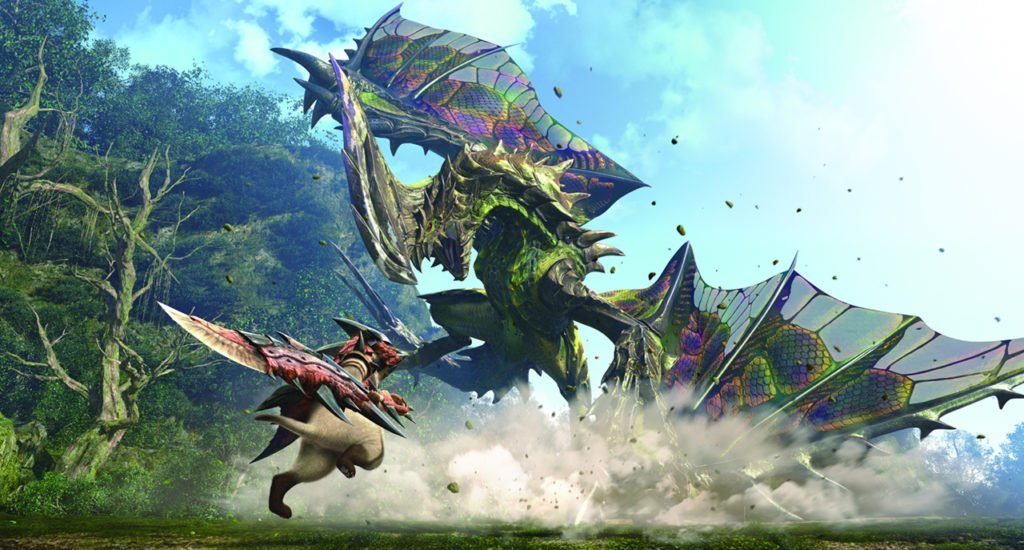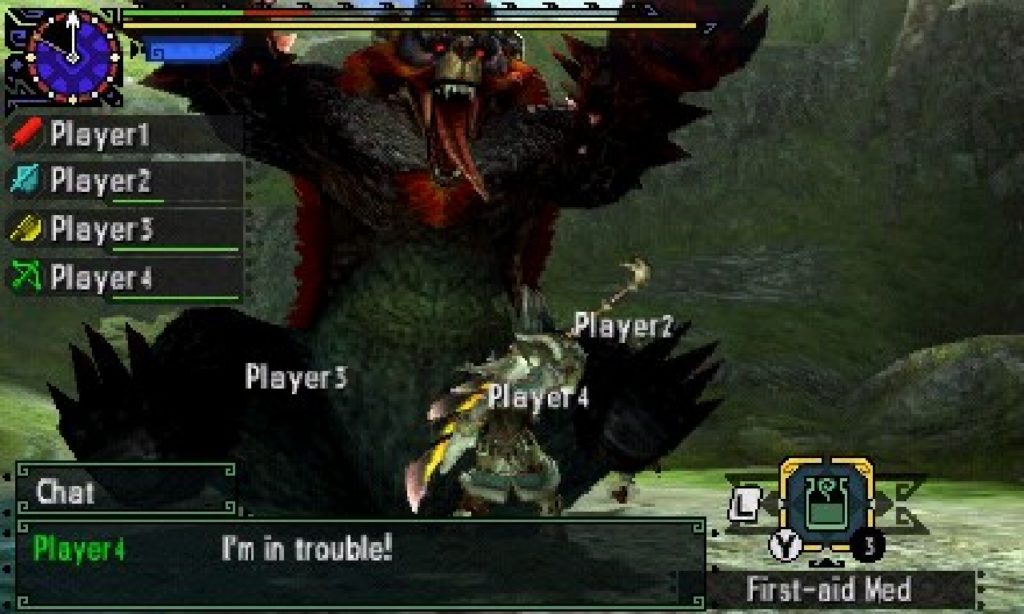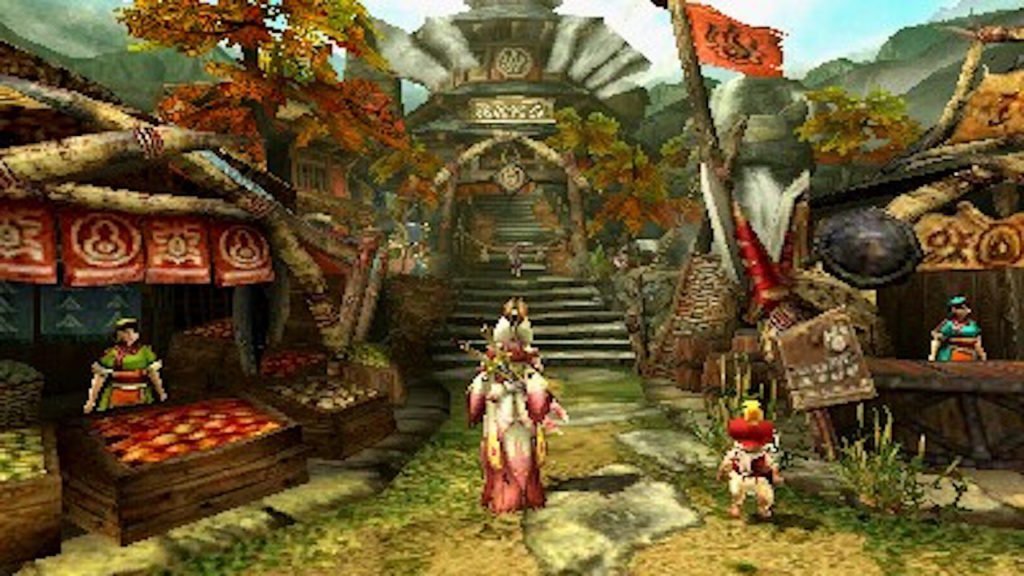After the resounding success of Monster Hunter 4 Ultimate, Capcom has dived back in with Monster Hunter Generations. Released as Monster Hunter X (pronounced ‘cross’) in Japan, the game serves as a celebration of the franchise by bringing back monsters, stages and characters from the previous four main games in an almost ‘all-star’ package. And after sinking my teeth into the game, feeding hundreds of hours into the series again, I can say it is a fantastic package.
However, despite taking elements from previous games, Monster Hunter Generations introduces some brand new mechanics, adding some quality-of-life changes and most importantly, some of the best new monsters ever.
Juxtaposed with its predecessors, Monster Hunter Generations has four flagship monsters, a number that is prevalent with this game. This time, the hunter must take down the “Fated Four” monsters that represent each of the four main elements in the game: Fire, Thunder, Ice and Water.
The Glavenus is a massive fire-imbued dinosaur that can grind its tail between its teeth to super-charge and attack hunters with said scorching tail. The Astalos commands the skies, summons wind, and calls down electricity on careless hunters who enter its domain. The Mizutsune is a graceful water leviathan that incapacitates hunters by making them slip all over the place, causing havoc. And finally, the Gammoth is a colossal-sized mammoth that can stomp and crush hunters, as well as break the snow on its feet to damage nearby enemies.

Alongside these 4 monsters, there are new variants to older monsters called ‘Deviants’. These aren’t to be confused with ‘subspecies’ which, in previous games, are usually tougher palette swap variants of the main species. Deviants (lore-wise) are battle hardened individual monsters from the main species that have adapted and become far stronger than their cohorts.
For example, the ‘Dreadqueen Rathian’ is a larger version of a typical Rathian, with purple hues on its scales. Its poison does far more damage, and at higher levels the poison changes to ‘Fatal Poison’, an incurable poison that will persist until the hunter’s death. Compare this to the Pink Rathian, which is a pink version of the same monster and is more resilient and tends to use its poison tail often.
As I mentioned earlier on, four is a prevalent number in Monster Hunter Generations. This is because not only are there four new flagship monsters, there are four village hubs and four ‘hunter styles’.
The first village the player will have access to is Bherna Village. An entirely new town made specifically for Monster Hunter Generations, it serves as the introductory town before players can explore the other three. After the end of the 1 star village questline, players will have instant access to Pokke Village from Monster Hunter Freedom 2, Kokoto Village from the original Monster Hunter and Yukumo Village from Monster Hunter Portable 3. It’s almost as if this game is a celebration of every generation of the series.

Naturally, the return of old towns brings familiar faces as the colorful cast of NPCs pop up in the villages. With 4 generations of characters, the dialogue is absolutely brimming with life and incredibly entertaining dialogue. Some of the best NPCs make an appearance such as the overconfident ‘Master of Styles’, the ever sassy Kokoto Gal and an NPC literally called “Neko (Means “Cat”)” who loves to drop some English translations for Japanese words. These NPCs help create a sense of color and substance to the personality and shtick of the game: to have fun and celebrate a wonderful decade for the franchise.
The ‘hunter styles’ mentioned above is a brand new mechanic introduced in Generations. This system adds a new level of depth for all 14 weapons currently in the game. Each style changes how the weapon is used by adding new mechanics. For example, the ‘Aerial Style’ allows any weapon user to leap into the air and take down enemies, making it the ideal style to knock down and mount monsters. The ‘Striker Style’ capitalizes on ‘hunter arts’ by allowing three slots instead of the usual one or two. The hunter arts are a series of special abilities that can do insane damage, provide exceptional buffs or get hunters out of a rough spot. The ‘Adept Style’ is a ‘high risk, high reward’ style that allows hunters to dodge into enemy attacks in order to punish them with a powerful counterattack. Obviously, it’s a risky way to play as it encourages players to jump right into an enemy attack with a precise dodge, but the damage output is astounding. Finally, for the traditionalist, there is the ‘Guild Style’ which will allow players to play with weapons as it has always been in previous games.
Online and local multiplayer returns and it’s improved from Monster Hunter 4U in some regards. There are now more specific filters you can place for rooms, such as the ability to look for ‘Event only’ rooms which only run DLC quests. The multiplayer hub has been condensed into two screens. One is the main area where quests can be accepted and is the ‘general lounge’ room. The second screen is a personal space where players have close access to their chest and the forgery. Unfortunately, Generations has removed the traditional ‘Arm Wrestling’ mini-game which allowed players to prove who was the better spammer.

Despite the incredible amount of variety and amazing amount of throwbacks, Generations takes some backward steps by ripping away some features that stood out most in Monster Hunter 4U last year.
One of the biggest losses is the lack of a more urgent story. In MH4U, the balance of the world is under threat because of the Gore and Shagaru Magala frenzy virus spreading across the land. This feeling of a grand scale threat is lost with the four Generations flagship monsters who are merely monsters that are causing trouble in their respective habitats. Even with the ‘special secret monster’, the scale of danger is far less impressive.
Another omission is the removal of numerous small features, such as the more involved monster introduction cutscenes, the inability to go to other villages while online and the removal of Guild Rank Quests. While the issue itself isn’t game breaking, it was these features that gave MH4U that added level of substance and enjoyability. Especially the Guild Quests, which added a tertiary tier of difficulty for all monsters.
That said, it is important to note again that Monster Hunter Generations is a celebration to the wonderful history of Monster Hunter. It’s for this reason that it’s understandable that cutscenes for old monsters are shortened while newer monsters receive a more detailed introduction. Furthermore, the sting of a lacking G-rank questline is compromised with the Special Permit system for Deviant monsters.

On that note, while there are some missing small features, there are even more quality of life additions that make Generations such a blissful game to play. For example, you can now hold down the A button in order to gather/carve items and craft items. This one little addition might seem a bit mundane, but for any experienced hunter, this change is an absolute godsend. The requirement to mash the A button to collect items, or to wait for the slow gathering animation to finish, has been eradicated.
There is just one problem that can’t be ignored. The game suffers from some horrible frame drops while in game. While minuscule for the New 3DS series, it is much more noticeable on the original 3DS series. Frame rate will often drop when there are many moving elements on the screen, which sluggishly effects camera movement and turn rates whilst escaping from literal ‘life-or-death’ situations. This is added on to the fact that Monster Hunter Generations (much like with 4U) does not have exceedingly fine and smoothed textures. Because of this the game does look very rough around the edges. That said, at a greater scope, the vistas can look very pretty.
Monster Hunter Generations builds upon the the success that was Monster Hunter 4 Ultimate and in many ways succeeds. However, many small flaws stops the title from being an incredibly breath-taking game. Regardless, the sheer volume of content is excellent. It is a complete blast to play through older locations with new mechanics, to fight huge monsters, forge amazing weapons and armor, and most of all, to fall in love with a franchise with an incredibly enjoyable community both locally and online.

